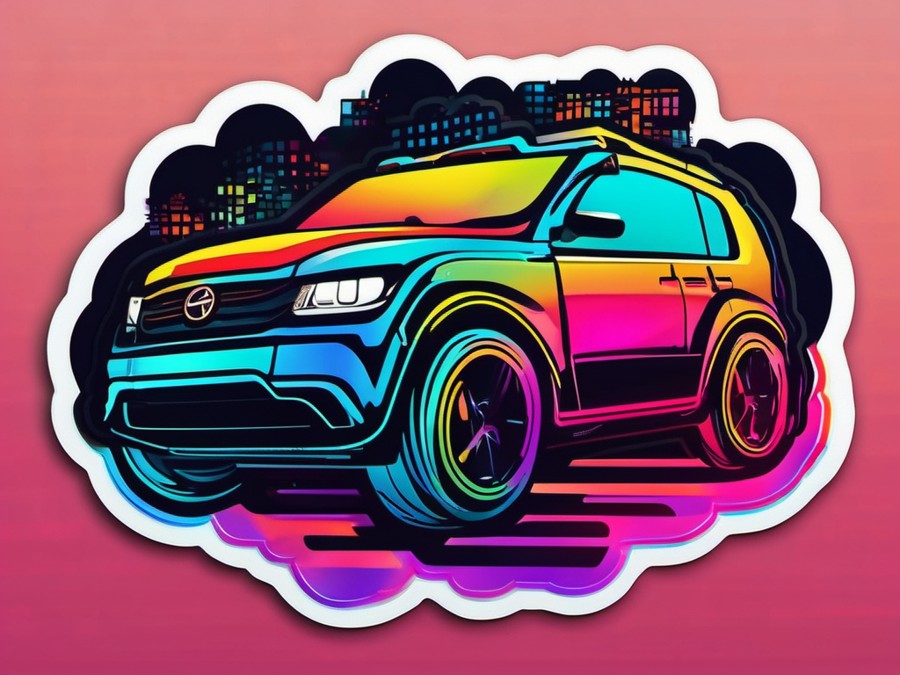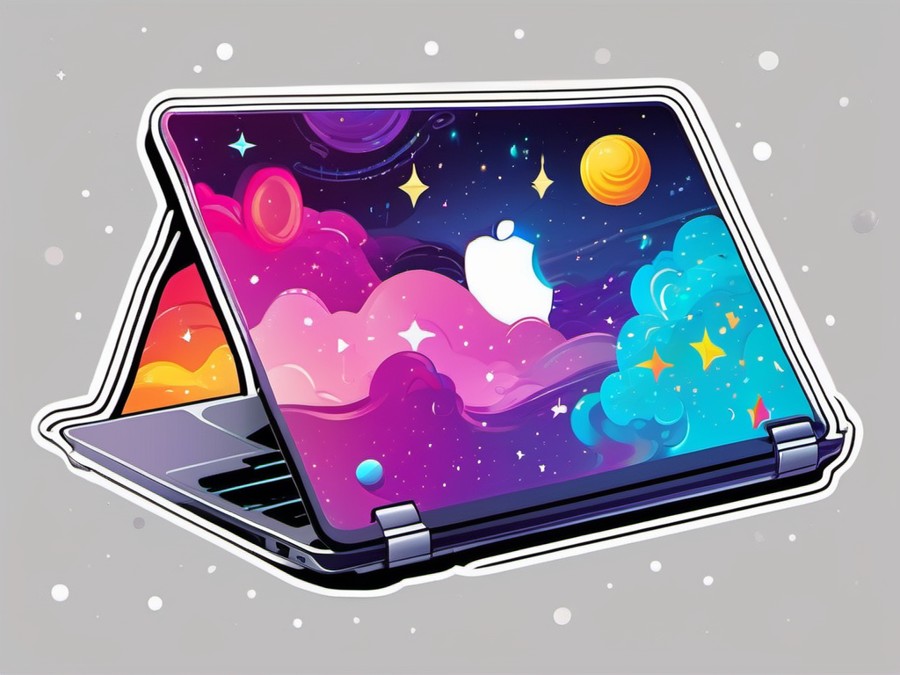· Charlotte Will · Skins & Decals · 7 min read
What is the Easiest Way to Remove a Decal from an Electronic Device?
Discover the easiest and safest methods to remove decals from electronic devices without causing damage. Our step-by-step guide covers various tools and techniques tailored to different devices like laptops, smartphones, and tablets. Learn how to handle stubborn residue and protect your devices with these proven methods.

Importance of Proper Decal Removal from Electronics
Removing a decal from an electronic device can seem like a daunting task. But don’t worry, with the right tools and techniques, you can safely and effectively remove those pesky stickers without damaging your device. The risks of improper removal include scratches, residue, and even malfunctions in sensitive areas. In this article, we’ll guide you through the easiest and safest methods to ensure your electronic devices remain in pristine condition.
Understanding Different Types of Decals
Before diving into the removal process, it’s essential to understand the types of decals you might encounter. Permanent and temporary are the two main categories. Permanent decals are designed to stay on for a long time and may be harder to remove, while temporary ones can usually be peeled off with minimal effort. Common types found on electronic devices include protective films, brand logos, and custom decorative stickers.
Preparation for Decal Removal
Gathering the Right Tools
Having the right tools at hand makes the process much smoother. Here’s what you need:
- Hairdryer or hot water for applying heat
- Isopropyl alcohol or other solvents to help break down the adhesive
- Plastic scraper or credit card for gentle scraping
- Lint-free cloth or sponge to wipe away residue
- Tweezers or cotton swabs for precision cleaning
Choosing the Right Location
Pick a well-ventilated area, preferably with a flat surface. This ensures that any fumes from solvents or heat don’t linger, and you have a stable workspace to avoid dropping or damaging your device.
Preparing the Surface
Start by cleaning the area around the decal with a mild soap and water solution. This step is crucial for removing any dirt or dust that could interfere with the removal process. Make sure your device is unplugged and turned off during this entire procedure.
Step-by-Step Guide to Decal Removal
Using Heat for Easier Removal
Heat is one of the most effective ways to soften the adhesive and make removal easier. You can use a hairdryer on its lowest setting or apply hot water with a sponge. Hold the heat source about 6 inches away from the decal for a few minutes until it starts to lift at the edges.
Leveraging Solvents
Solvents help dissolve the adhesive, making the decal slide off more smoothly. Isopropyl alcohol is a popular choice, but you can also use products like Goof Off or WD-40. Apply a small amount of solvent to a lint-free cloth or cotton swab and gently rub the decal. Be cautious not to let any solvent seep into the device’s openings or sensitive areas.
Employing a Plastic Scraper
A plastic scraper or even an old credit card can be instrumental in lifting the decal. Gently slide the edge of the scraper under the decal and lift it off in a slow, steady motion. Avoid using metal objects that could scratch the surface.
Utilizing Adhesive Removers
Store-bought adhesive removers can be highly effective if you’re dealing with stubborn decals. Follow the instructions on the package, and always test a small area first to ensure there’s no adverse reaction. For a DIY solution, you can mix equal parts baking soda and coconut oil to create a paste that helps to break down the adhesive.
Cleaning Up Residue
Even after removing the decal, you might still see some adhesive residue. Dip a cotton swab in isopropyl alcohol and gently rub the affected area. For tougher residues, consider using a citrus-based cleaner or a magic eraser. Always ensure any cleaning solution is compatible with your device’s material.
Specialized Techniques for Different Devices
Removing Decals from Laptops
Laptops can be tricky due to their various surfaces. Start by heating the decal with a hairdryer, then apply isopropyl alcohol and let it sit for a few minutes. Use a plastic scraper to lift the edges, and carefully peel it off. For tough residue, use a lint-free cloth dampened with alcohol to thoroughly clean the area.
Safe Sticker Removal from Smartphones
Smartphone screens are delicate, so extra care is needed. Avoid using heat on the screen as it can cause damage. Instead, apply a small amount of isopropyl alcohol to a cotton swab and gently rub the decal. Use tweezers or a plastic scraper to lift the edges if necessary, making sure not to scratch the screen.
Handling Decals on Tablets
Tablets often have protective coatings that can react differently to solvents. Test a small, hidden area first with isopropyl alcohol before applying it widely. Use a hairdryer to soften the adhesive if necessary, and then gently scrape off the decal. Clean any residue with a lint-free cloth dampened with alcohol.
Decal Removal on Other Electronics
For other devices like e-readers, wearables, or even gaming consoles, the process is similar. Always start with heat to soften the adhesive and then apply a solvent. Use tweezers or a plastic scraper for precise control, and clean up any remaining residue.
Troubleshooting Common Issues
Dealing with Stubborn Residue
Persistent adhesive can be frustrating. If standard methods don’t work, try using a citrus-based cleaner or even peanut butter (yes, really!). Apply a small amount of peanut butter to the residue, let it sit for 15 minutes, and then wipe it off with a damp cloth.
Preventing Damage to the Device
To avoid scratches or other damage:
- Be gentle: Don’t use excessive force.
- Use appropriate tools: Stick to plastic scrapers and lint-free cloths.
- Test first: Always test a small, hidden area before applying any cleaners or solvents.
Reapplying Decals
If you need to reapply a protective decal, ensure the surface is clean and dry. Follow the manufacturer’s instructions for proper application to maintain the decal’s effectiveness and longevity.
Conclusion
Removing a decal from an electronic device doesn’t have to be a challenging task. By understanding the types of decals, preparing your tools and workspace, and following our step-by-step guide, you can safely and effectively remove those stickers. Don’t forget to clean up any residue, employ specialized techniques for different devices, and troubleshoot common issues. With a bit of patience and care, your electronic devices will look as good as new.
FAQs
What should I do if the decal is very old and dried out?
For old, dried-out decals, start by applying heat to soften the adhesive. Then, use a solvent and gently scrape away the decal. If residue remains, consider using peanut butter or a citrus-based cleaner for stubborn adhesive.
Can I use household items like olive oil or vinegar for decal removal?
While some household items can help, olive oil and vinegar may leave residue or cause damage. Isopropyl alcohol is a safer and more effective option. For tough residue, a citrus-based cleaner or even peanut butter can be helpful.
Is it safe to use a razor blade to scrape off the decal?
Avoid using razor blades or any sharp objects, as they can scratch the surface of your device. Opt for a plastic scraper or an old credit card for gentle and safe scraping.
How can I avoid messing up the finish on my electronic device?
To protect your device’s finish, be gentle and use appropriate tools. Test a small, hidden area first before applying any cleaners or solvents to ensure there’s no adverse reaction.
Are there any preventative measures I can take to make decal removal easier in the future?
To simplify future removals, avoid using permanent decals if possible. Opt for temporary stickers that can be easily peeled off. Regularly clean your devices to prevent buildup of dirt or dust that could complicate the removal process.
For more tips on caring for your electronic devices, check out our guide on What is the Best Way to Backup Data Using an External Hard Drive?. If you’re interested in customizing your phone, our article on What is the Best Way to Apply a Decal to Your Phone? provides useful insights.




